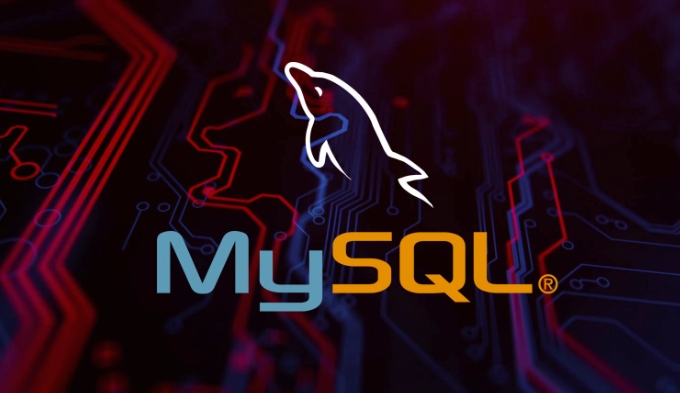To reset MySQL's root password, follow the following steps: 1. Stop the MySQL server, use sudo systemctl stop mysql or sudo systemctl stop mysqld; 2. Start MySQL in --skip-grant-tables mode, execute sudo mysqld --skip-grant-tables &; 3. Log in to MySQL and execute the corresponding SQL command to modify the password according to the version, such as FLUSH PRIVILEGES; ALTER USER 'root'@'localhost' IDENTIFIED BY 'your_new_password'; or UPDATE mysql.user SET authentication_string=PASSWORD('your_new_password') WHERE User='root'; FLUSH PRIVILEGES; 4. Restart MySQL service normally, exit the MySQL shell first, then use sudo kill $(pgrep mysqld) to stop the temporary instance, and finally use sudo systemctl to restart the service.

If you've lost the root password for your MySQL server, don't panic — it's possible to reset it without too much trouble. The key is to temporarily bypass the normal authentication system so you can set a new password. This process works best if you have access to the server machine and sudo privileges.

Step 1: Stop the MySQL Server
Before you can reset the password, you need to stop the running MySQL instance. If it's currently active, stopping it will allow you to restart it in a special mode.

-
On most Linux systems, you can do this with:
sudo systemctl stop mysql
Or, if you're on a system using
mysqld:
sudo systemctl stop mysqld
Once the service is stopped, you're ready to move on to starting MySQL without loading the usual security restrictions.
Step 2: Start MySQL in Skip-Grant-Tables Mode
This step is cruel. Starting MySQL with the --skip-grant-tables option tells it not to load the permission system, which means you can log in without a password.
You can start it manually like this:
sudo mysqld --skip-grant-tables &
(The
&at the end sends the process to the background.)
Now you'll be able to connect to MySQL as root without any password.
Note: Make sure no other users or applications are trying to access the database during this time, as this leaves it vulnerable.
Step 3: Log in and Change the Password
With MySQL running in safe mode, connect to it:
mysql -u root
You'll go straight into the MySQL prompt. From there, run the following SQL commands to update the root password.
For MySQL 5.7 or 8.0:
FLUSH PRIVILEGES; ALTER USER 'root'@'localhost' IDENTIFIED BY 'your_new_password';
If you're using an older version:
UPDATE mysql.user SET authentication_string=PASSWORD('your_new_password') WHERE User='root'; FLUSH PRIVILEGES;
Make sure to replace 'your_new_password' with something secure.
Step 4: Restart MySQL Normally
After setting the new password, shut down the temporary MySQL instance and restart the service normally.
First, exit the MySQL shell:
exit;
Then stop the manual instance:
sudo kill $(pgrep mysqld)
And restart the service:
sudo systemctl start mysql
Or again, use mysqld instead if that's what your system uses.
Try logging back in with your new password:
mysql -u root -p
That's basically it. It's a straightforward process once you know the steps, but easy to forget if you haven't done it in a while. Just remember to always keep your credentials secure afterward — resetting passwords shouldn't be a regular thing.
The above is the detailed content of Resetting the root password for MySQL server. For more information, please follow other related articles on the PHP Chinese website!

Hot AI Tools

Undress AI Tool
Undress images for free

Undresser.AI Undress
AI-powered app for creating realistic nude photos

AI Clothes Remover
Online AI tool for removing clothes from photos.

Clothoff.io
AI clothes remover

Video Face Swap
Swap faces in any video effortlessly with our completely free AI face swap tool!

Hot Article

Hot Tools

Notepad++7.3.1
Easy-to-use and free code editor

SublimeText3 Chinese version
Chinese version, very easy to use

Zend Studio 13.0.1
Powerful PHP integrated development environment

Dreamweaver CS6
Visual web development tools

SublimeText3 Mac version
God-level code editing software (SublimeText3)

Hot Topics
 What is a typical process for MySQL master failover?
Jun 19, 2025 am 01:06 AM
What is a typical process for MySQL master failover?
Jun 19, 2025 am 01:06 AM
MySQL main library failover mainly includes four steps. 1. Fault detection: Regularly check the main library process, connection status and simple query to determine whether it is downtime, set up a retry mechanism to avoid misjudgment, and can use tools such as MHA, Orchestrator or Keepalived to assist in detection; 2. Select the new main library: select the most suitable slave library to replace it according to the data synchronization progress (Seconds_Behind_Master), binlog data integrity, network delay and load conditions, and perform data compensation or manual intervention if necessary; 3. Switch topology: Point other slave libraries to the new master library, execute RESETMASTER or enable GTID, update the VIP, DNS or proxy configuration to
 How to connect to a MySQL database using the command line?
Jun 19, 2025 am 01:05 AM
How to connect to a MySQL database using the command line?
Jun 19, 2025 am 01:05 AM
The steps to connect to the MySQL database are as follows: 1. Use the basic command format mysql-u username-p-h host address to connect, enter the username and password to log in; 2. If you need to directly enter the specified database, you can add the database name after the command, such as mysql-uroot-pmyproject; 3. If the port is not the default 3306, you need to add the -P parameter to specify the port number, such as mysql-uroot-p-h192.168.1.100-P3307; In addition, if you encounter a password error, you can re-enter it. If the connection fails, check the network, firewall or permission settings. If the client is missing, you can install mysql-client on Linux through the package manager. Master these commands
 Why do indexes improve MySQL query speed?
Jun 19, 2025 am 01:05 AM
Why do indexes improve MySQL query speed?
Jun 19, 2025 am 01:05 AM
IndexesinMySQLimprovequeryspeedbyenablingfasterdataretrieval.1.Theyreducedatascanned,allowingMySQLtoquicklylocaterelevantrowsinWHEREorORDERBYclauses,especiallyimportantforlargeorfrequentlyqueriedtables.2.Theyspeedupjoinsandsorting,makingJOINoperation
 What are the transaction isolation levels in MySQL, and which is the default?
Jun 23, 2025 pm 03:05 PM
What are the transaction isolation levels in MySQL, and which is the default?
Jun 23, 2025 pm 03:05 PM
MySQL's default transaction isolation level is RepeatableRead, which prevents dirty reads and non-repeatable reads through MVCC and gap locks, and avoids phantom reading in most cases; other major levels include read uncommitted (ReadUncommitted), allowing dirty reads but the fastest performance, 1. Read Committed (ReadCommitted) ensures that the submitted data is read but may encounter non-repeatable reads and phantom readings, 2. RepeatableRead default level ensures that multiple reads within the transaction are consistent, 3. Serialization (Serializable) the highest level, prevents other transactions from modifying data through locks, ensuring data integrity but sacrificing performance;
 How to safely purge old MySQL binlog files?
Jun 19, 2025 am 01:01 AM
How to safely purge old MySQL binlog files?
Jun 19, 2025 am 01:01 AM
To clean MySQL binlog files, you should use the PURGEBINARYLOGS command or set the automatic expiration time, and files cannot be deleted directly. 1. Use the PURGE command to clean old logs by file name or time. Before execution, you need to confirm that the slave library no longer uses the relevant logs; 2. Check the current log status and slave library location through SHOWMASTERSTATUS and SHOWSLAVESTATUS to ensure the security of the cleaning range; 3. It is recommended to set the binlog_expire_logs_seconds parameter to achieve automatic cleaning, which is suitable for long-term operation environments; 4. Deleting files directly will cause serious problems such as master-slave synchronization failure and inconsistent log information, and must be avoided.
 How to add the MySQL bin directory to the system PATH
Jul 01, 2025 am 01:39 AM
How to add the MySQL bin directory to the system PATH
Jul 01, 2025 am 01:39 AM
To add MySQL's bin directory to the system PATH, it needs to be configured according to the different operating systems. 1. Windows system: Find the bin folder in the MySQL installation directory (the default path is usually C:\ProgramFiles\MySQL\MySQLServerX.X\bin), right-click "This Computer" → "Properties" → "Advanced System Settings" → "Environment Variables", select Path in "System Variables" and edit it, add the MySQLbin path, save it and restart the command prompt and enter mysql--version verification; 2.macOS and Linux systems: Bash users edit ~/.bashrc or ~/.bash_
 How to install MySQL on Windows 11
Jun 29, 2025 am 01:47 AM
How to install MySQL on Windows 11
Jun 29, 2025 am 01:47 AM
The key steps for installing MySQL on Windows 11 are as follows: 1. Download the correct version, select the Windows MSI installation package and ensure that the system is 64-bit; 2. Select the "Custom" mode during installation, add MySQLServer and set the appropriate installation path; 3. Run the configuration wizard, select the "ServerComputer" configuration type, set the root password, and select the automatic startup method; 4. After the test installation is successful, if the prompt command is unavailable, add the MySQL bin directory to the system PATH environment variable. Follow these steps to complete the installation and configuration smoothly.
 Resetting the root password for MySQL server
Jul 03, 2025 am 02:32 AM
Resetting the root password for MySQL server
Jul 03, 2025 am 02:32 AM
To reset the root password of MySQL, please follow the following steps: 1. Stop the MySQL server, use sudosystemctlstopmysql or sudosystemctlstopmysqld; 2. Start MySQL in --skip-grant-tables mode, execute sudomysqld-skip-grant-tables&; 3. Log in to MySQL and execute the corresponding SQL command to modify the password according to the version, such as FLUSHPRIVILEGES;ALTERUSER'root'@'localhost'IDENTIFIEDBY'your_new







